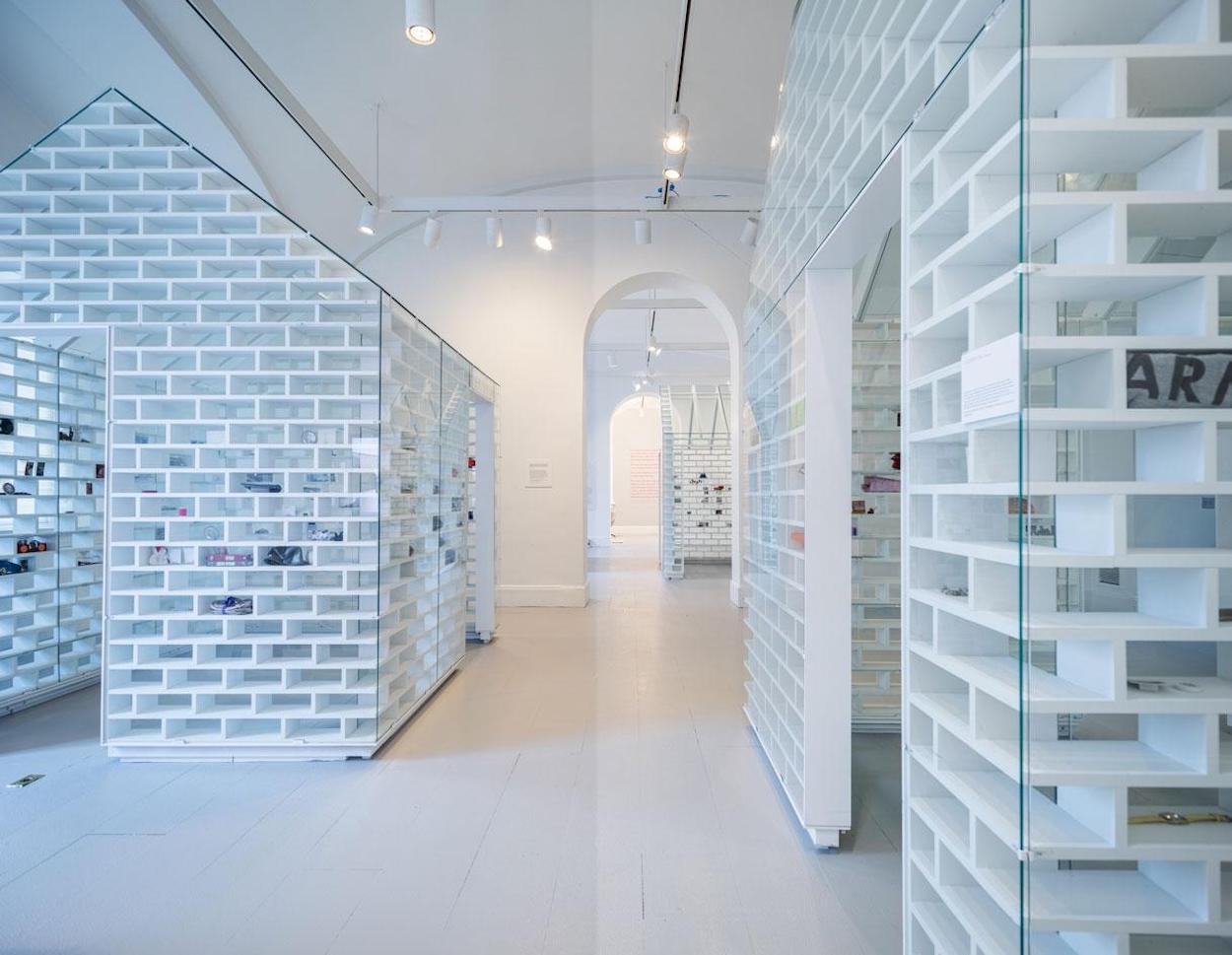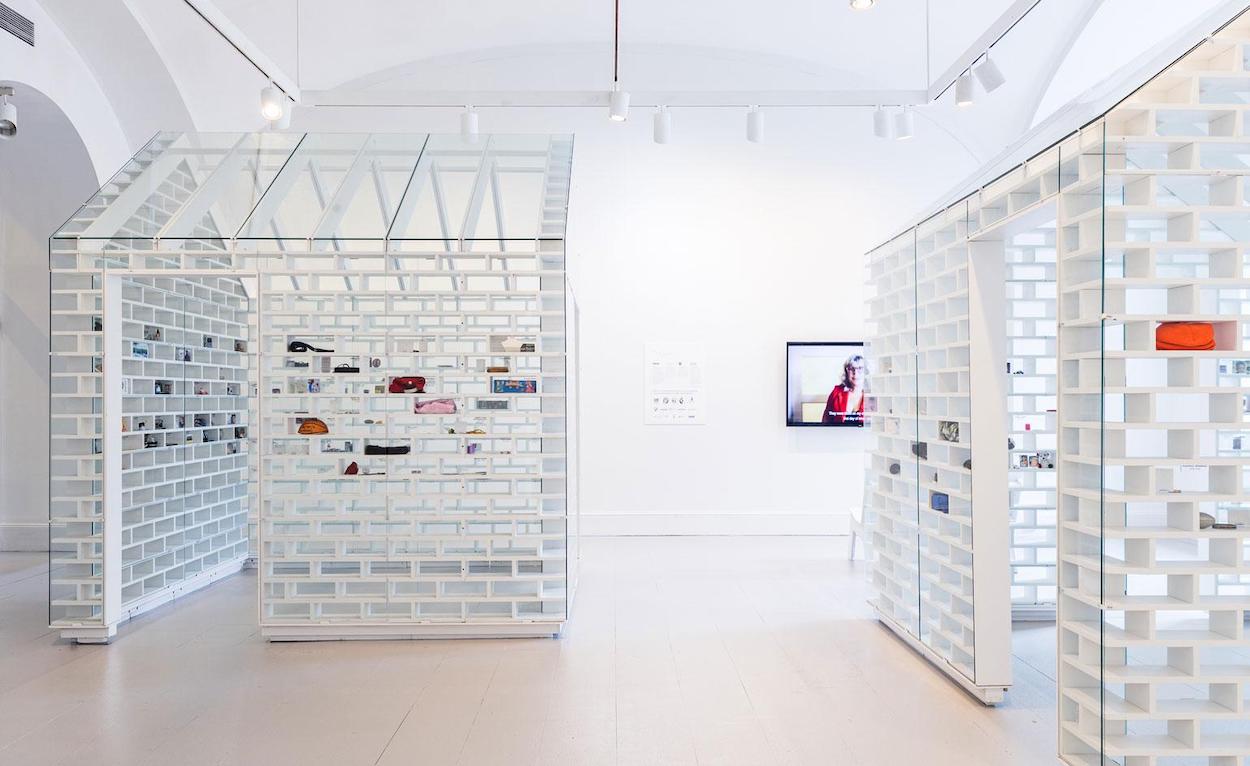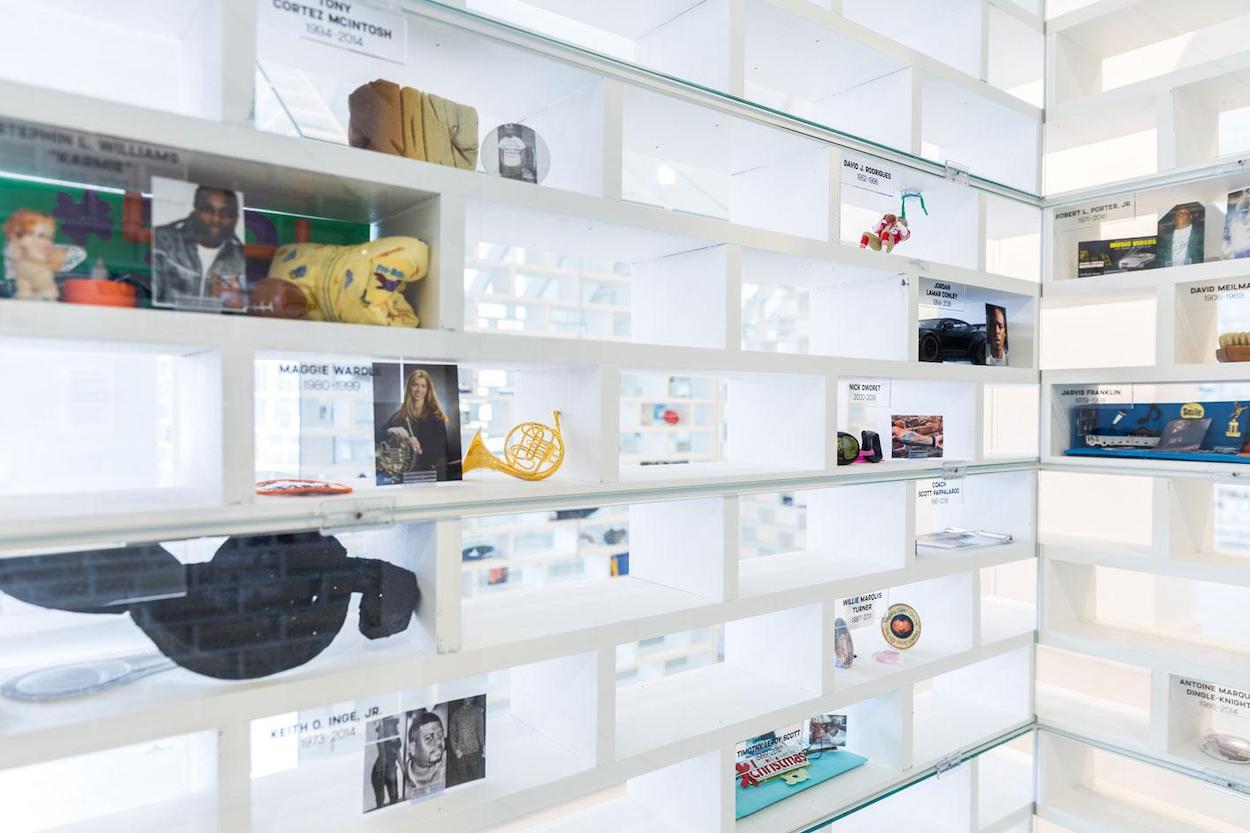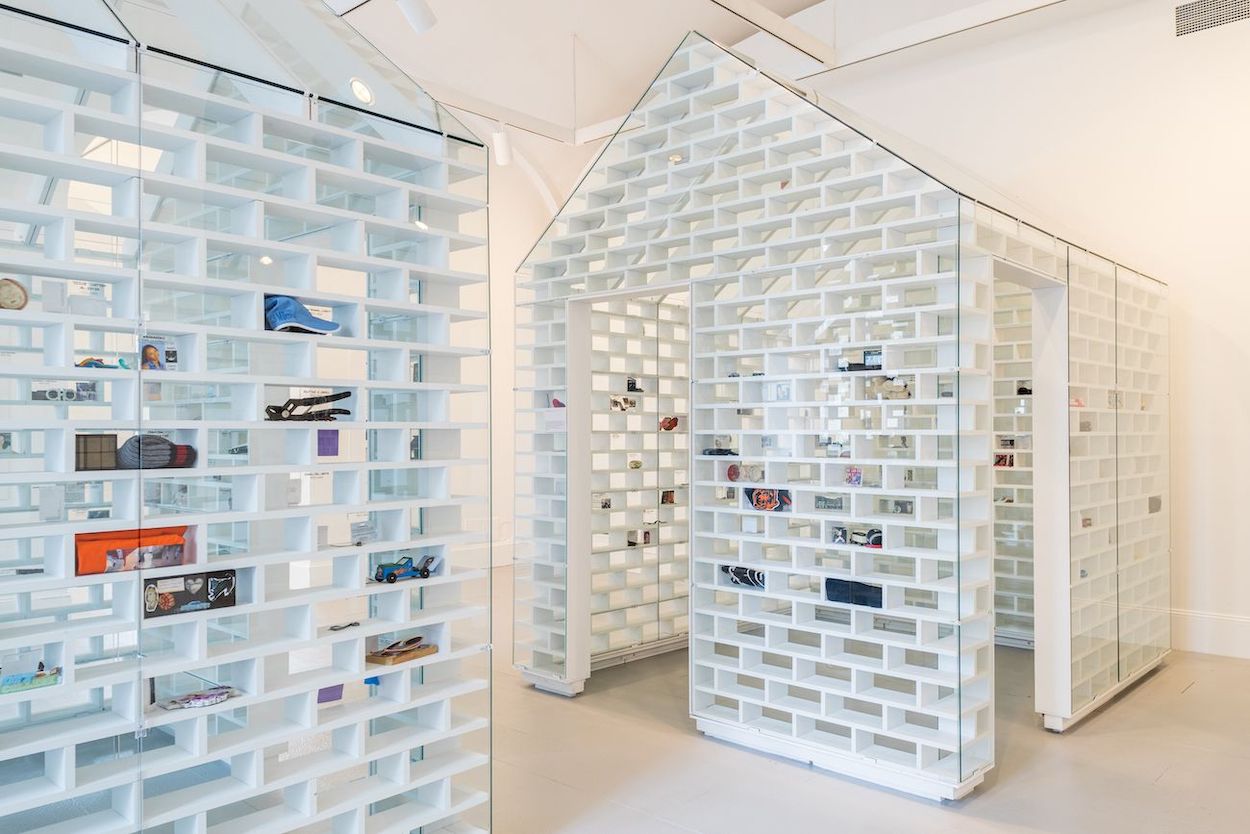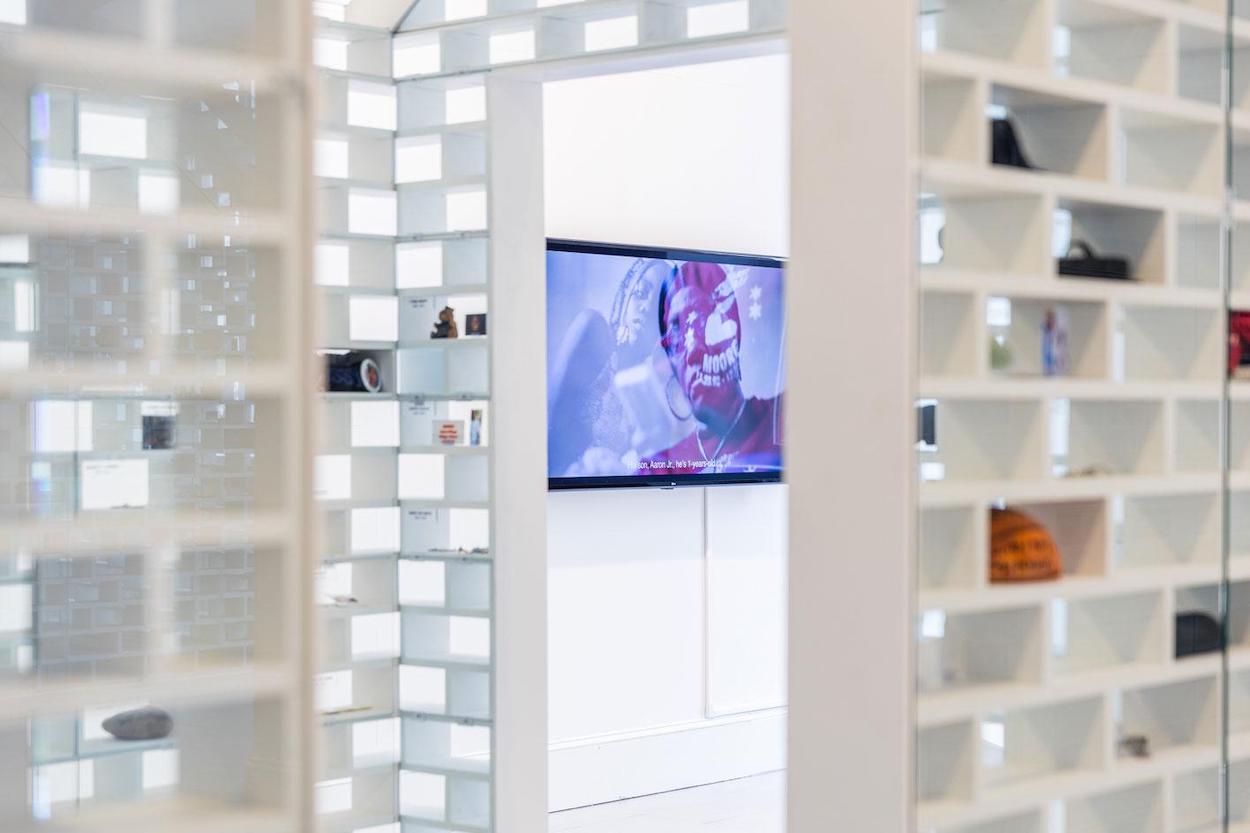According to the nonprofit research group Gun Violence Archive, nearly 40,000 Americans succumb to gun violence every year—an epidemic of such great magnitude that it often reduces victims to mere statistics. Though many of their stories remain forever untold, some are being permanently enshrined in the Gun Violence Memorial Project, a poignant memorial to victims conceived by the conceptual artist Hank Willis Thomas and Mass Design Group in partnership with gun violence prevention organizations Purpose Over Pain and Everytown for Gun Safety at the National Building Museum in Washington, D.C.
The project “provides a space for people to share their stories and give voice to the human side” of the gun violence crisis, says Michael Murphy, founder of Mass Design Group. It comprises four house-like structures built from 700 glass bricks, referencing the weekly death toll from gun-related violence in the U.S. Each brick contains a remembrance object—photographs, baby shoes, graduation tassels, and prayer books among them—donated by victims’ family members to preserve their individual memories and communicate the enormity of the gun violence crisis in built space. “It’s an ever-changing testimony to love, loss, and life,” continues Murphy. “With each story, the entire memorial changes and grows.” Also featured are excerpts from Comes the Light, a forthcoming documentary directed by Haroula Rose and produced by Caryn Capotosto about the devastating effects of gun violence.
For Thomas, the project takes on an acutely personal touch. “My family felt the effects of gun violence firsthand when my cousin was murdered during a robbery in 2000,” he says of his late relative, Songha, the namesake of the public art practice Songha & Company. “My life, and by extension my artistic practice, has been influenced ever since.”
Thomas previously meditated on the crisis through a monumental sculpture, 14,719 (2018), shown at his mid-career survey at the Portland Art Museum, in which strips of blue fabric reminiscent of the U.S. flag were hand-stitched with one white star for every person nationwide who died from gun violence that year. They descended from the museum’s soaring atrium, creating a chapel of loss that questions the second-amendment patriotism that many mistake for the right to kill. “The most likely way for young African American men to die is by gun violence,” Thomas told the New York Times. “But all you have to be is alive in America and you can fall victim.”
Mass Design Group, a nonprofit Boston-based design collective, has risen to prominence for architectural projects such as hospitals in Rwanda, a cholera treatment center in Haiti, and a “waiting village” for pregnant women in Malawi that advocate for human dignity, social justice, and healing. In 2018, the firm completed the National Memorial for Peace and Justice in Montgomery, Alabama, that honors more than 4,000 victims of racially motivated lynching. For the Gun Violence Memorial Project, the firm strove to “communicate the enormity of the epidemic while also honoring the individuals whose lives have been taken,” says senior associate Jha D. Williams. “The recognizable form of the wood lattice and glass houses are but the framework in which the more intimate narrative is shared; the memorial is the willingness of families to share personal artifacts and stories of their loved ones.”
The Gun Violence Memorial Project is being presented alongside “Justice Is Beauty: The Work of Mass Design Group,” a retrospective of the firm’s work, through September 25. It previously appeared at the Chicago Cultural Center during the 2019 Chicago Architecture Biennial, though plans are underway to find a permanent location as a national memorial. Murphy hopes it will mark the “beginning of a multi-year initiative to collect objects from across the country” that will display in 52 houses—a number that symbolizes weeks in a year and the number of U.S. states and territories—on the National Mall. His vision isn’t unlike the NAMES Project’s AIDS Memorial Quilt, which displayed there in 1987. (Julie Rhoad, former president of the NAMES Project Foundation, is now a senior director of Mass Design Group.)
And if you can’t attend in person, check out Everytown’s Moments That Survive, a digital campaign that lets people share their stories and build community among fellow survivors.
(All images courtesy of the National Building Museum)
